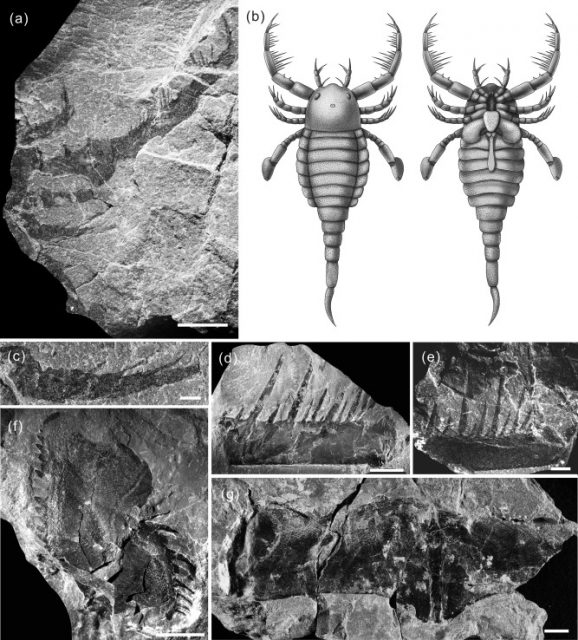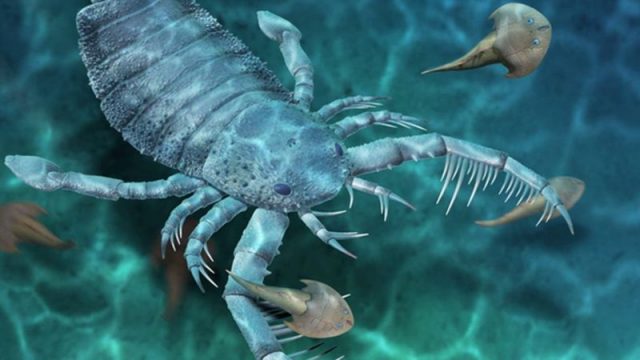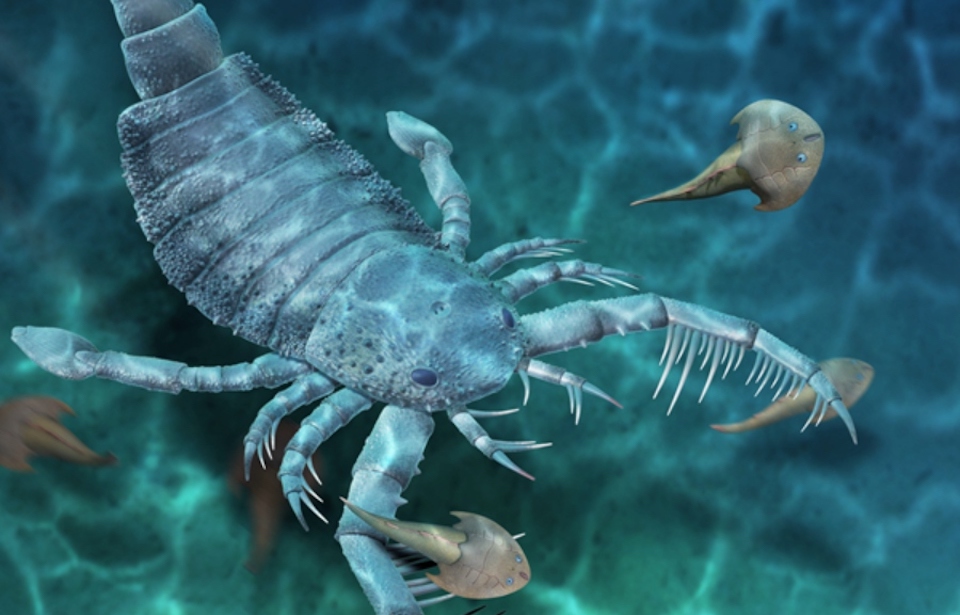Paleontologists from the China Academy of Sciences have published a study in the journal Science Bulletin revealing the discovery of a new species of eurypterid in the waters of the South China Sea. It’s the first such discovery in 80 years and suggests there is more to be learned about the Mixopteriade family.

Fossils found in Xiushan and Wuhan of 15- and 40-inches in length, respectively, prove the existence of the species. Named Terropterus xiushanensis, the 3.3-foot-long sea scorpion prowled the waters off what is now China between 443.8 and 419.2 million years ago, during the Silurian period.
According to the authors of the study, the fossils are likely of juvenile Terropteruses, meaning adults of the species were likely much larger.
During the Silurian period, Terropterus would have been an apex predator, stalking and pouncing on fish and mollusks, which it scooped up with its pedipalps before ingesting. The pedipalps are similar to those used by the whip spider. The species also had tails filled with poison to overpower its prey.
“Terropterus is likely to have played an important role of top predator in the marine ecosystems during the Early Silurian when there were no large vertebrate competitors in South China,” the researchers wrote in the study.
🧐A #fossil of a new Silurian fish Bianchengichthys micros,dating back nearly 4.23 billion years,has been discovered in #Xiushan of Chongqing, China. pic.twitter.com/ofR8Wjhzza
— iChongqing (@iChongqing_CIMC) June 22, 2021
Terropterus was a eurypterid, an ancient arthopod closely related to the horseshoe crab and modern arachnids. It is also the first species belonging to the Mixopteriade family discovered in about 80 years, as well as the first to be found in what would have been the supercontinent of Gondwana.
Knowledge of Mixopteriades is sparse, and much of what is known comes from specimens previously discovered in Scotland, New York, Norway and Estonia. The family is characterized by its semi-circular scales, large exoskeleton, and scattered nodules.
Examination of the fossils suggests that the evolutionary history of the Mixopterids may more complex than previously thought. Furthermore, their analysis indicates features one believed to have been ancestral to the group – such as the presence of a small joint in the third appendage – possibly evolved independently in the different species.

More from us: Lions And Tigers And… Cows? Oh My! Australia’s Dangerous Animals List Isn’t What You’d Expect
“Our first Gondwanan mixopterid – along with other eurypterids from China and some described specimens – suggests an under-collecting bias in this group,” researchers wrote. “Future work, especially in Asia, may reveal a more cosmopolitan distribution of mixopterids and perhaps eurypterids.”
